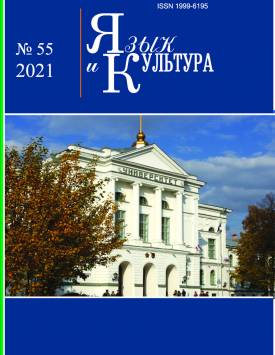Close (slow) reading: Theoretical background and practical application experience
The paper aims at analyzing the close (slow) reading method as a means for consecutive and thorough text interpretation. The author provides a brief review of the method history by 1) indicating the main contributors to the method development (A.A. Richards, G. Lanson), 2) describing the approaches to text interpretation in Russian paradigm (rhetorical, language-and-style, language-and-poetics), and 3) showing the influence of R. Barthes and C. Honore on the understanding of the method's teleology, the latter being the necessity of the reader to ‘feel' the text. Further, the author enumerates the chief levels of close (slow) reading: namely, language, semantics, structure, and culture. The level of the language allows specifying the functions of the units of poetic text; the semantic level allows considering the system of all possible meanings of this or that unit in a poetic text; structural level works with the syntagmatic bonds of lexical units whereas cultural level dwells on the ‘beyond-language' factors. Additionally, a detailed analysis is done on the most frequent interpretation types based on Al Filreis's webcasts, as well as on MOOC of his: namely, dictionary-related, inter-textual, and associative interpretations. Dictionary-related interpretations require analyzing a bunch of meanings fixed in a dictionary published in the same period with the text under analysis. Intertextual and associative interpretations show a higher degree of interpretative freedom and require 1) finding the connection between the text under analysis and all the texts that could - hypothetically - influence it or 2) appealing to the interpreter's personal experience. Finally, the results of the method's application are discussed on the example of two poetic works: I Taste a Liquor Never Brewed by Emily Dickinson and Why I Am Not a Painter by Frank O'Hara. The author has chosen these particular works because they belong to the two fundamental paradigms of American poetry suggested by Al Filreis. The close (slow) reading of Dickinson's work is based on dictionary-related interpretations. They allow compiling three topical groups of the poem. By analyzing the three groups with the combined application of intertextual and associative reading, one can conclude that I Taste a Liquor Never Brewed can be considered a metapoem, that is, a poem about poetry. The close (slow) reading of O'Hara's work was carried out on the language and culture levels, which included analyzing the lexis and syntax of the poem, as well as paying attention to the main aesthetical grounds of New York School of poetry where O'Hara belonged. The meanings resulting from such reading appear to prove that Why I Am Not a Painter is a metapoem as well.
Keywords
close (slow) reading, text interpretation, poetic text, Emily Dickinson, Frank O'HaraAuthors
| Name | Organization | |
| Zorina N.V. | National Research Tomsk State University | nad514@yandex.ru |
References

Close (slow) reading: Theoretical background and practical application experience | Yazyk i Kultura – Language and Culture. 2021. № 55. DOI: 10.17223/19996195/55/14
